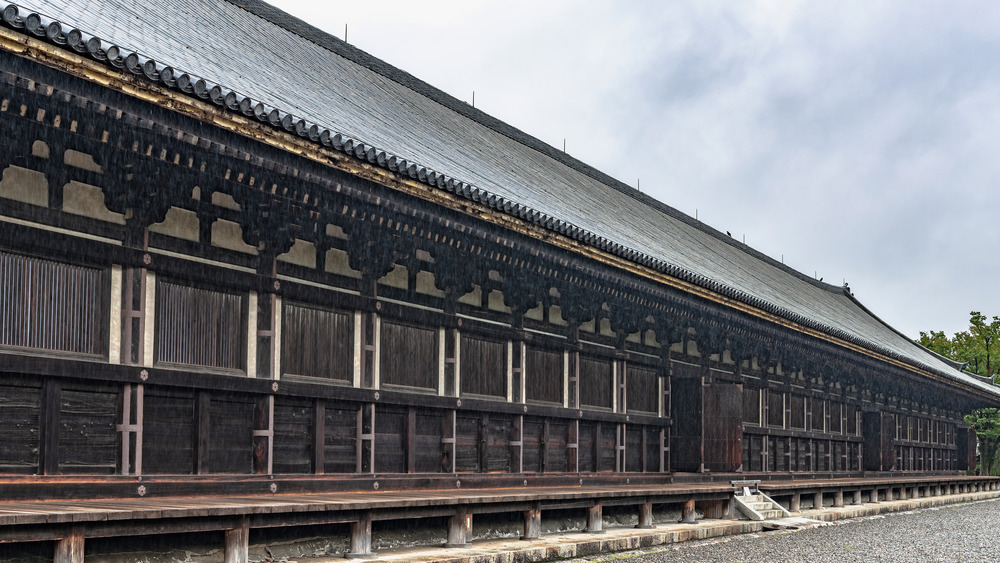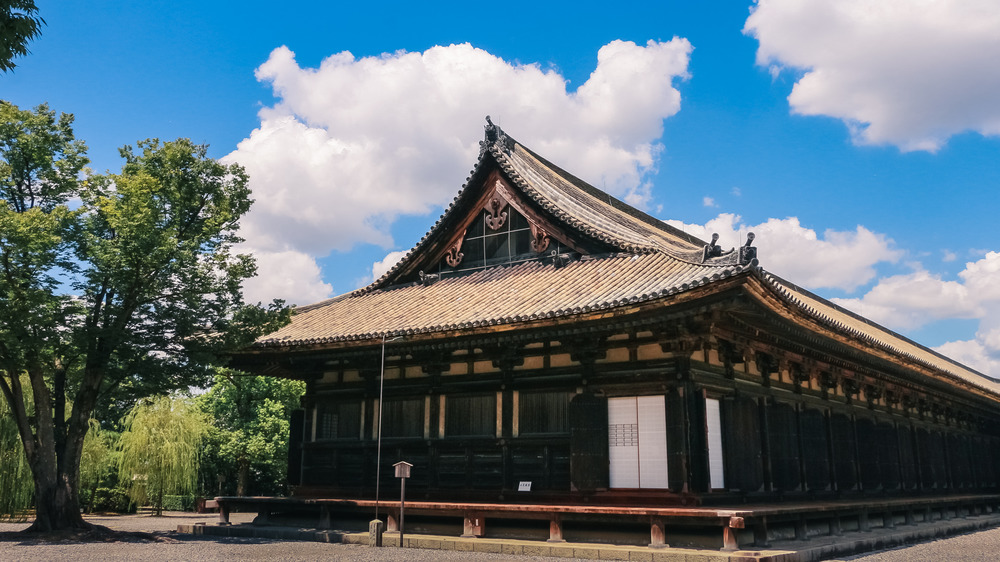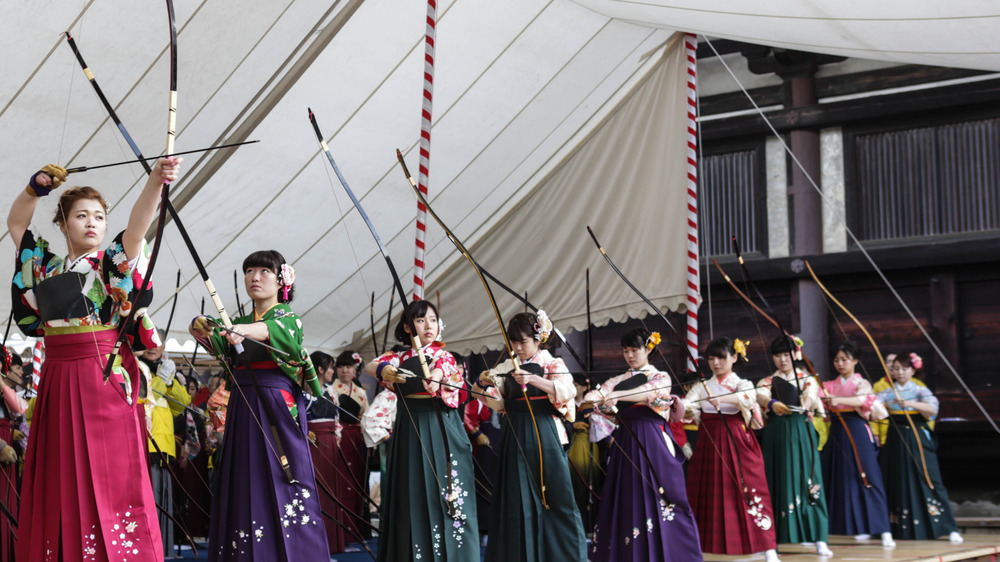This Japanese Hall Featuring 1,001 Statues Is More Important Than You Think
In Japan, people take their temples seriously. Religious temples dot the country and often feature fascinating architecture inside. One such building is the Sanjūsangen-dō temple. And it isn't just a nice building; there are a few things inside that make it one of the more important places to visit to learn about Japanese history.
Sanjūsangen-dō is located in the Kyoto prefecture, in the Higashiyama district. It's a gorgeous structure, of course, but it's more popular for what it houses: 1,001 statues of Kannon, the Buddhist goddess of mercy. And these are kept in a long wooden structure that is Japan's longest building, as explained by Sacred Destinations. The statues are so unique because each one has a different face. The temple has even been designated as a Japanese National Treasure.
According to the Ancient History Encyclopedia, the temple was built in 1164 CE on the order of former emperor Go-Shirakawa. He wanted a temple that celebrated Kannon and told one of his ministers, Taira-no-Kiyomori, to make plans for it. It was originally part of Goshirakawa's home, the Ho-Juji Palace, but the rest of the castle was destroyed in 1183.
The entire temple consists of just a single building, in which all the statues are held. It measures 393 feet long and 54 feet wide. Sanjūsan means 33 in Japanese, and that's why the temple is called Sanjūsangen-dō because of the 33 spaces between the columns that support it. The number is sacred to Kannon, who is said to have 33 manifestations.
The number is important in this Japanese temple
Numbers mean a lot in Sanjūsangen-dō. Each of the 1,001 life-sized statues of Kannon has 40 arms, which in turn can save 25 worlds. Since the goddess has 33 manifestations and 1,001 figures of her in the temple, she can then make 33,033 shapes in Sanjūsangen-dō.
There is one central Kannon statue in Sanjūsangen-dō; a seated one with 1,000 arms is in the middle of the building. The rest flank her.
Each of the statues of Kannon features a unique face because the goddess herself has at least 11 different faces, all the better to see human suffering, said JapanGuide.com. Many visitors to the temple go around the statues to catch a likeness of someone they loved in one of the many faces.
The hall also features other Buddhist figures. The temple is also home to 28 statues of Japanese gods that protect the universe. And then there are sculptures of two guardians of Buddhist temples: Raijin, the god of Thunder, and Fujin, the god of wind. Each of the statues in the temple was carved from Japanese cypress and are covered in gold leaf.
The building you see today, though, is a reconstruction; a fire destroyed the original temple in 1249, and only 124 of the original statues were saved. Former emperor, Go-saga, had the temple rebuilt exactly to the way it was, and the remaining 826 figures had to be remade. Sanjūsangen-dō has since been renovated at least four times.
The Japanese temple at Sanjūsangen-dō is home to a rite of passage
But Sanjūsangen-dō is not just essential viewing because of the many Kannon statues. Nor is it important because the famous Japanese warrior Miyamoto Musashi fought a duel outside it in 1604, as described by Atlas Obscura.
Sanjūsangen-dō is the site of a very famous archery contest, called the Toshiya, and it's been held for more than 400 years. According to Nalata Nalata, the competition is held every second Sunday in January and sees both men and women enter. It takes place after Coming of Age day in Japan and represents an exercise for young people to understand how adult life takes patience and self-control.
Each archer — who, by the way, has to carry gorgeous traditional Japanese bow and arrows — must fire his or her arrows the entire length of the building. Contestants must be at least 20 years old and prove they can sink an arrow precisely. They also have to wear traditional robes to participate. The record was set in the 1600s, when Daihachi Waza sank 8,133 of the 13,033 arrows he had fired within the 24-hour limit.
Priests also perform a ritual called the Rite of the Willow at the temple. They touch a person's forehead with a willow branch to ward off headaches.
Sanjūsangen-dō may house 1,001 national treasures, but it also plays a part in teaching young people how to be adults.


